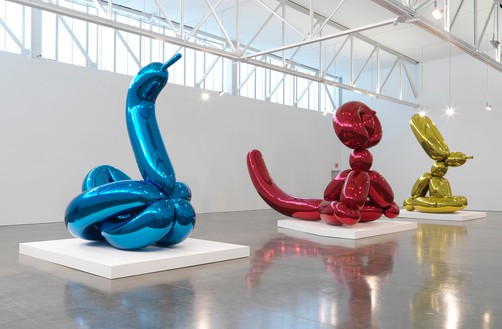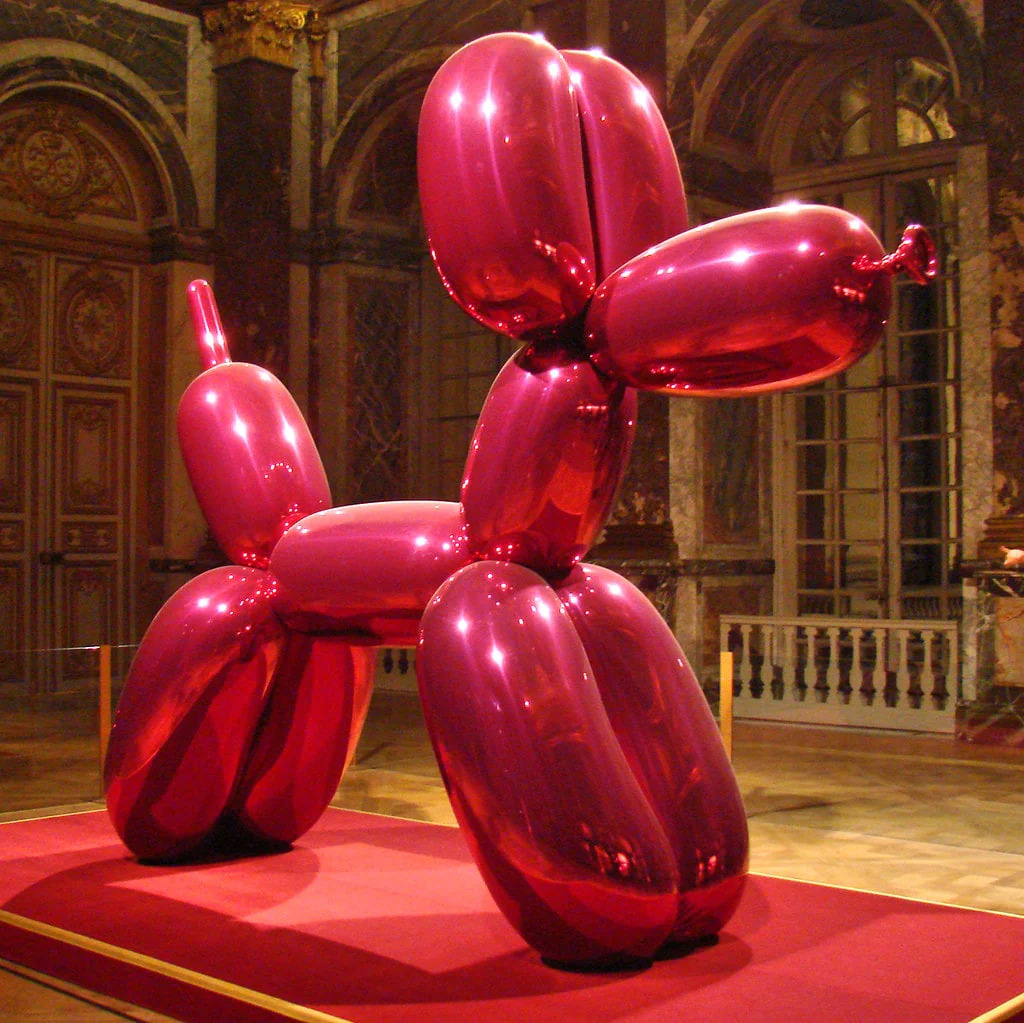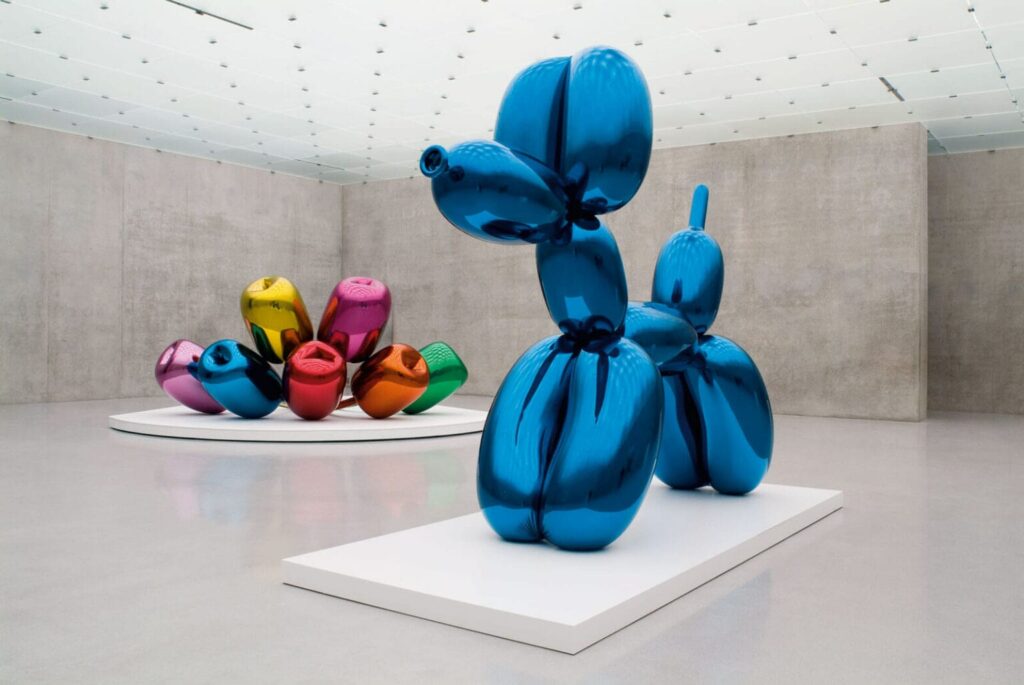Balloon Dog : How an old clown trick became popular art
(please note that this article is for educational purpose, Editions Studio is an independent producer not related to Jeff Koons)
To understand Balloon Dog means considering its fascinating maker, Jeff Koons, who was born in 1955 in York, Pennsylvania. Koons’ CV is lengthy and impressive. Among his accomplishments is holding two record prices achieved at auction for a work by a living artist (one of which is Balloon Dogs (Orange), which went for $58.4 million in 2013). Later, in 2019, his Rabbit sculpture went for an even more astounding $91.1 million.

While initially pursuing an art education in Baltimore, Jeff Koons embarked on a successful career in finance, working as a Wall Street broker in the years leading up to his full-time dedication to art. His artistic talent quickly gained recognition, and his first solo exhibition took place in 1980. Since then, Koons has enjoyed numerous major exhibitions at prestigious institutions such as the Museum of Contemporary Art in Chicago, the Guggenheim Museum in Bilbao, and the Walker Art Center in Minneapolis. Beyond his artistic endeavors, Koons is a dedicated philanthropist, serving on the board of the International Centre for Missing & Exploited Children and generously donating over $4 million to support their initiatives, including the Koons Family Institute
The Origins of Balloon Dog
Jeff Koons’s iconic Balloon Dog belongs to his celebrated 1994 series, Celebration, which encompasses 20 gleaming metal sculptures and around 15 captivating oil paintings. Alongside the five metallic dogs, Koons crafted Easter eggs, Valentine’s hearts, and diamonds, all adorned in his signature reflective stainless steel finish. Through Koons’s masterful vision and meticulous process, these ordinary objects transcend their everyday simplicity to become lavish symbols of joy, lightheartedness, and the innocence of childhood.

Celebration honored his son’s hoped-for return to the USA from Italy following a custody battle. The choice of subject matter for the series reflects themes of innocence, playfulness, hopefulness, and the American dream in the spirit of his son’s potential homecoming. Inflatable and pop-culture-inspired artworks were already in Koons’ œuvre (Michael Jackson and Bubbles famously depicts the then-alive American pop singer with his pet monkey Bubbles).
The Balloon Dogs, in particular, stand out as the most recognizable and celebrated creations from Jeff Koons’s expansive body of work, including his renowned Celebration series. These sculptures capture the essence of childhood joy and festivity, resembling the inflated balloon dogs often found at carnivals and birthday parties. Their flawless stainless steel surface, devoid of any imperfections, exudes an aura of elegance and craftsmanship. The viewer’s reflection, distorted yet clearly visible in the polished surface, adds an element of self-referentiality and engagement, fostering a sense of connection with the artwork.

There are a total of five original Balloon Dogs, measuring 307.3 × 363.2 × 114.3 cm and weighing one ton. Built from metal and then coated with their respective colors (magenta, blue, orange, yellow, red), each artwork is pristine yet playful. As listed on Koons’ website, the dates of the Balloon Dog are 1994–2000, with the medium being ‘mirror-polished stainless steel with transparent color coating.’
A Conceptual Look Into the Artwork
Regarding his choice of balloon animals as his subject for Balloon Dog, Koons stated, “I’ve always enjoyed balloon animals because they’re like us … We’re balloons. You take a breath and you inhale, it’s an optimism. You exhale, and it’s kind of a symbol of death”. You can certainly feel this lightheartedness through his Balloon Dog, which evokes the joy and vibrance of childhood.
In a bold move, Jeff Koons has consistently asserted that his work is not meant to convey a specific or predetermined meaning. Instead, he emphasizes the role of the viewer in shaping the interpretation of the artwork. This notion is reinforced by his preference for reflective materials, which actively engage the viewer and create a personalized viewing experience. In a fascinating twist, Koons elevates the humble balloon dog, a fleeting and inexpensive object, into a permanent and immensely valuable work of art, imbuing it with a new level of significance and permanence.

Like some of the greatest artists, Koons’ has provoked strong reactions. One critic, Amy Dempsey, said his Balloon Dog is “an awesome presence…a massive durable monument”. Many see it as part of the conversation about consumerism and popular culture, in the tradition of artists such as Andy Warhol, one of Koons’ biggest artistic inspirations.
In a notable case, Jeff Koons asserted copyright infringement against a San Francisco bookstore that produced balloon-dog bookends. However, recognizing the inherent public domain nature of a balloon shaped into a dog, Koons opted to withdraw the lawsuit. Today, several publishers produce these balloon dog shaped sculptures, with Editions Studio being the sole producer of metal editions of both dogs and rabbits.
